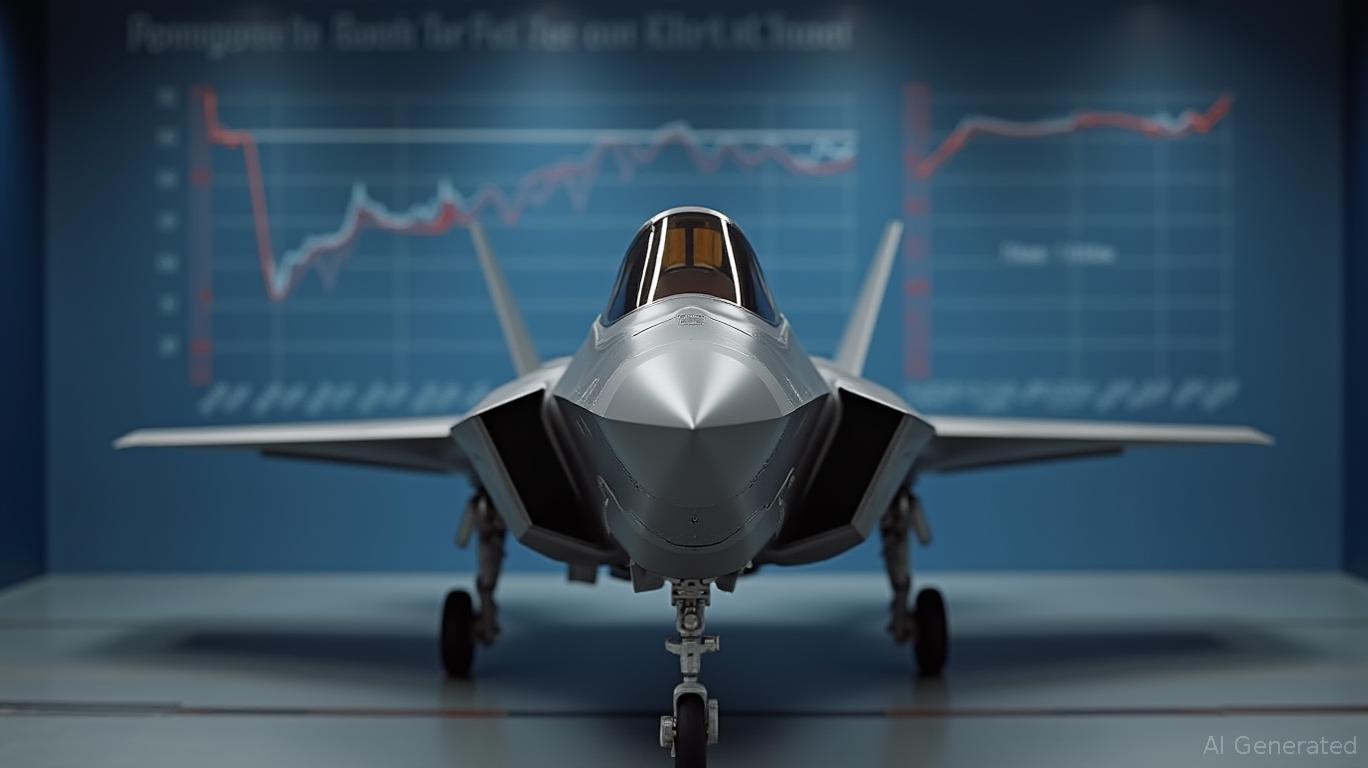Lockheed Martin's Q1 2025 Earnings Preview: Navigating Headwinds and Strategic Shifts
As Lockheed Martin (LMT) prepares to report Q1 2025 earnings on April 22, investors face a critical juncture for the defense giant. While the company has historically exceeded earnings expectations, recent headwinds—from contract losses to classified program setbacks—have clouded its trajectory. This preview breaks down what to watch for in the report, the risks, and the path to recovery.

Key Metrics to Watch
The consensus estimates call for Q1 revenue of $17.8 billion, a 3.3% year-over-year increase, and EPS of $6.42, up 1.4% from Q1 2024. However, these figures mask deeper complexities. Analysts have trimmed their estimates slightly in the past month, reflecting skepticism around LMT’s ability to overcome recent missteps. A critical focus will be whether LMT can exceed these modest expectations, given its history of beating estimates in four consecutive quarters.
The Zacks Earnings ESP model assigns a -2.12% surprise probability, suggesting LMT may struggle to outperform. This contrasts sharply with its track record, including a 16.2% EPS beat in Q4 2024. Investors will scrutinize whether this quarter’s results signal a return to form or further challenges.
Segment Performance: Growth vs. Declines
Lockheed’s four segments—Aeronautics, Rotary and Mission Systems (RMS), Missiles and Fire Control (MFC), and Space—will reveal critical trends:
Aeronautics ($6.98B in sales, +2% YoY): This segment, home to the F-35 program, faces scrutiny over cost overruns and the loss of the $20B F-47 contract to Boeing. Investors will look for updates on F-35 production efficiency and whether new international deals offset the F-47 blow.
Rotary and Mission Systems ($4.31B, +5.4% YoY): A bright spot, RMS benefits from cyber defense and drone system demand. Sustained growth here could offset weaknesses in other divisions.
Missiles and Fire Control ($3.20B, +6.9% YoY): A strong rebound after a disastrous Q4 2024, when MFC posted an $804M loss. The segment’s recovery hinges on stabilization of its core programs.
Space ($3.22B, -1.5% YoY): Declines here stem from reduced work on the Next-Generation Overhead Persistent Infrared (OPIR) program. Investors will seek clarity on whether this is a temporary dip or a sign of broader weakness.
F-35 Program and DOGE Scrutiny: Critical Risks
The F-35 remains Lockheed’s crown jewel but also its Achilles’ heel. The Department of Government Efficiency (DOGE) continues to probe cost overruns, which could delay future contracts or force pricing concessions. Analysts estimate the F-35 program’s profit margins have compressed by 200 basis points since 2022, a trend that—if unchecked—could drag down overall profitability.
The stock’s 7.6% decline over 12 months underscores investor anxiety. A strong F-35 update and clarity on DOGE’s demands could reverse this trend.
Margin Pressures and Contract Wins
Operating margins are another focal point. While Aeronautics and RMS are expected to see margin improvements, Space’s 1.5% revenue drop and MFC’s fragile recovery leave little room for error.
Meanwhile, Lockheed’s ability to win new contracts—outside the F-47 loss—is vital. The company is bidding on key programs like the Next-Generation Air Dominance (NGAD) fighter and the Army’s Future Vertical Lift (FVL) drone. Success here could offset F-35-related pressures.
Stock Outlook: A Tipping Point
With LMT trading below its $525.73 average analyst target, the market is pricing in caution. A beat on EPS or revenue could spark a rally, while a miss might exacerbate underperformance. Long-term, the FY2025 EPS guidance of $27.15 (a 4.6% decline) suggests a tough year ahead, but a rebound to $29.63 in 2026 hints at stabilization.
Conclusion: Can LMT Defy the Odds?
Lockheed Martin faces a pivotal quarter. While its core segments show resilience, the F-35’s challenges and recent contract losses loom large. The $6.42 EPS estimate is modest, but beating it would restore investor confidence. Conversely, a miss could deepen skepticism about the company’s ability to navigate fiscal headwinds.
Crucial data points include:
- F-35 production costs and international sales: A 5%+ increase in international orders could offset U.S. program delays.
- Space segment recovery: A 2% revenue rebound in Q2 2025 would signal stability.
- Margin trends: A 100-basis-point improvement in operating margins across segments would be a positive sign.
History suggests LMT can surprise—four consecutive earnings beats prove its operational agility. However, the current environment demands more than execution; it requires convincing investors that defense spending reforms won’t erode long-term prospects. With $17.8B in revenue and $6.42 in EPS, this quarter is a test of whether Lockheed can pivot from adversity to opportunity. The answer will shape the stock’s trajectory for years to come.

_ea5fa73f1750203501414.jpg)
_dab570481750202897772.jpg)







